|
|
|
|
Kinematics in iterated correlations of a passive acoustic experiment |
|
geomC4
Figure 6. Experiment geometry for the evaluation of |
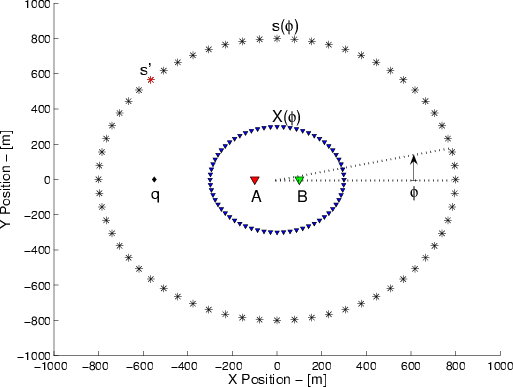
|
|---|---|
|
|
The contribution of each term is labeled according to the numbering of equation 15. We sum
![]() over the auxiliary stations, according to equation 18, to obtain the retrieved signal in Figure 8(b). We compare this signal to the true result, convolved with the square of the autocorrelation of the wavelet
over the auxiliary stations, according to equation 18, to obtain the retrieved signal in Figure 8(b). We compare this signal to the true result, convolved with the square of the autocorrelation of the wavelet ![]() , and the result retrieved by correlating stations
, and the result retrieved by correlating stations ![]() and
and ![]() directly (
directly (
![]() ) weighted by
) weighted by
![]() . It is clear that the dominant contribution in
. It is clear that the dominant contribution in
![]() , without muting
, without muting
![]() and
and
![]() , does not correspond to the direct event between the stations
, does not correspond to the direct event between the stations ![]() and
and ![]() . If we assume we can perfectly mute only the dominant term 4.1 from
. If we assume we can perfectly mute only the dominant term 4.1 from
![]() and
and
![]() , this would leave the terms of group 2.
, this would leave the terms of group 2.
A correlogram of their contributions to
![]() is shown in Figure 9(a), summing this panel and multiplying with a phase-modifying according to equation 18, leads to the signal in Figure 9(b). We now see that there is a dominant term coinciding with the causal direct event between stations
is shown in Figure 9(a), summing this panel and multiplying with a phase-modifying according to equation 18, leads to the signal in Figure 9(b). We now see that there is a dominant term coinciding with the causal direct event between stations ![]() and
and ![]() in the true result; this event comes from term 15.11.
in the true result; this event comes from term 15.11.
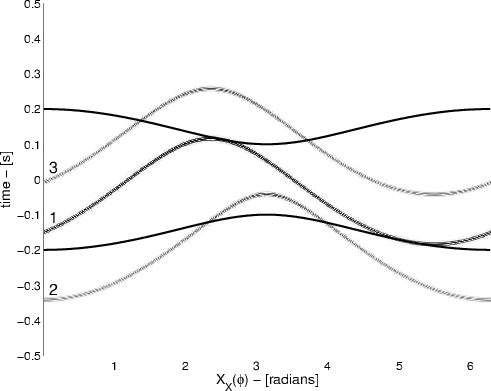
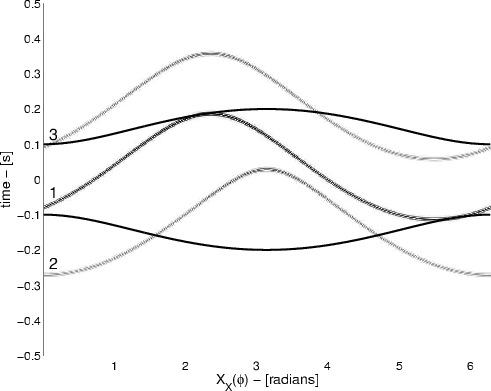
|
|---|
|
corrC2a,corrC2b
Figure 7. a) Correlogram for correlations between station |
|
|
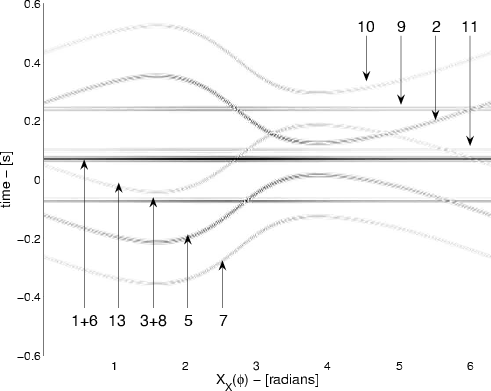
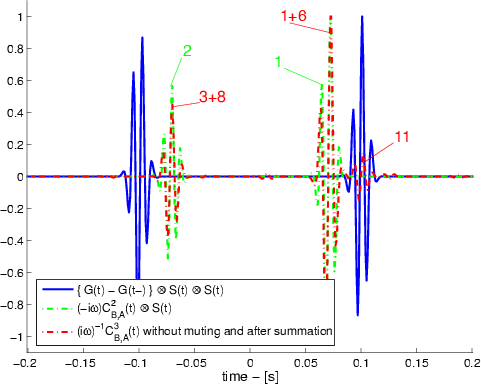
|
|---|
|
corrC4ABa,resultC4a
Figure 8. a) Correlogram of |
|
|
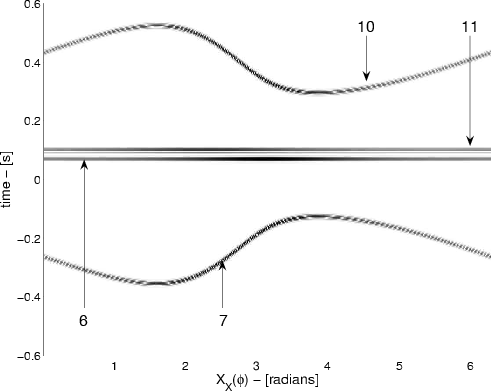
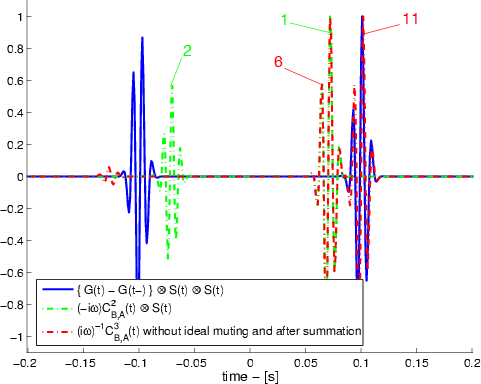
|
|---|
|
corrC4ABb,resultC4b
Figure 9. a) Comparison of reconstructed Green's function with the true result, after summation of all 11 terms of groups 1 and 2 over auxiliary station. b) Comparison of reconstructed Green's function with true result, after summation of 4 terms of group 2 over auxiliary station. |
|
|
|
|
|
|
Kinematics in iterated correlations of a passive acoustic experiment |